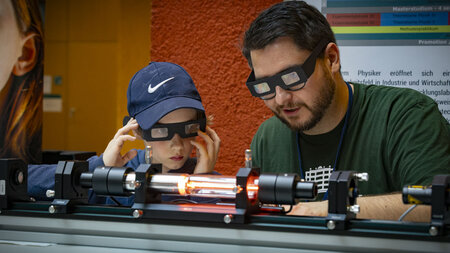Eintrag in der Universitätsbibliographie der TU Chemnitz
Forke, Roman
Mehner, Jan (Prof. Dr.-Ing. habil.) ; Hoffmann, Martin (Prof. Dr.-Ing. habil.) (Gutachter)
Mikromechanisches kraftgekoppeltes Sensor-Aktuator-System für die resonante Detektion niederfrequenter Schwingungen
Micro-mechanical force-coupled sensor-actuator-system for the resonant detection of low frequency vibrations
Kurzfassung in deutsch
Die vorliegende Arbeit beschreibt die Entwicklung und Charakterisierung eines mikromechanischen kraftgekoppelten Schwingsystems für die resonante Detektion niederfrequenter Schwingungen. Es wird ein neuartiges Prinzip vorgestellt, das es ermöglicht, niederfrequente Vibrationen frequenzselektiv zu erfassen. Mittels Amplitudenmodulation wird das niederfrequente Signal in einen höheren Frequenzbereich umgesetzt. Durch Ausnutzung der mechanischen Resonanzüberhöhung wird aus dem breitbandigen Signal ein schmales Band herausgefiltert, die anderen Frequenzbereiche werden unterdrückt. Auf diese Weise wird direkt die spektrale Information des niederfrequenten Signals gewonnen. Eine Fourier-Transformation ist hierbei nicht notwendig. Die Abstimmung des Sensors erfolgt über eine Wechselspannung und führt dadurch zu einer einfachen Auswertung.Die Schwerpunkte der Arbeit liegen in den theoretischen Untersuchungen zum neuartigen Sensorprinzip, in der Entwicklung einer mikromechanischen Sensorstruktur zum Einsatz des neuen Prinzips sowie in der Entwicklung und Charakterisierung eines Messsystems zur Detektion niederfrequenter mechanischer Schwingungen mit dem neuen Sensor.
Kurzfassung in englisch
This thesis describes the development and characterization of a micromechanical force coupled oscillator system for the resonant detection of low frequency vibrations. It presents a novel working principle that enables spectral measurements of low frequency vibrations. The low frequency spectral content is converted into a higher frequency range by means of amplitude modulation. Due to the mechanical resonance a narrow band is filtered out of the wide band vibration signal. The remaining frequency content is suppressed. Hence, the spectral information is directly obtained with the sensor system without a fast Fourier transform. The tuning is done with an AC voltage resulting in a simple analysis.The main focuses of the work are the theoretical analysis of this novel sensor principle, the development of the micromechanical sensor structure for the use of the novel principle as well as the development and characterization of a measurement system for the spectral detection of low frequency mechanical vibrations with the developed sensor system.
| Universität: | Technische Universität Chemnitz | |
| Institut: | Professur Mikrosysteme und Medizintechnik | |
| Fakultät: | Fakultät für Elektrotechnik und Informationstechnik | |
| Dokumentart: | Dissertation | |
| Betreuer: | Mehner, Jan (Prof. Dr.-Ing. habil.) | |
| ISBN/ISSN: | 978-3-941003-74-3 | |
| URL/URN: | http://nbn-resolving.de/urn:nbn:de:bsz:ch1-qucosa-100498 | |
| Quelle: | Chemnitz : Universitätsverlag der Technischen Universität Chemnitz, 2012. - 160 S. | |
| Freie Schlagwörter (Deutsch): | Mikrotechnologie , elektromechanische Modulation , kraftgekoppelte Schwinger , resonante Schwingungsdetektion , Breitbandschwinger , frequenzselektiv , kapazitiv , BDRIE , Systemsimulation , mechanischer Spektrumanalyzer | |
| Freie Schlagwörter (Englisch): | microtechnology , MEMS , condition monitoring , electro mechanical modulation , force coupled oscillator , resonant vibration detection , resonator , wideband , damping , capacitive detection , BDRlE technology , vibration sensor , wafer level test , system simulation , mechanical spectrum analyzer | |
| Tag der mündlichen Prüfung | 23.11.2012 |




